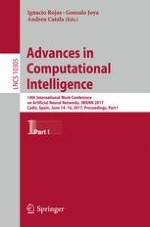2017 | OriginalPaper | Buchkapitel
Deep Belief Networks and Multiobjective Feature Selection for BCI with Multiresolution Analysis
verfasst von : Julio Ortega, Andrés Ortiz, Pedro Martín-Smith, John Q. Gan, Jesús González-Peñalver
Erschienen in: Advances in Computational Intelligence
Aktivieren Sie unsere intelligente Suche, um passende Fachinhalte oder Patente zu finden.
Wählen Sie Textabschnitte aus um mit Künstlicher Intelligenz passenden Patente zu finden. powered by
Markieren Sie Textabschnitte, um KI-gestützt weitere passende Inhalte zu finden. powered by
